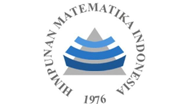Development of a Mathematical Model for the Optimization of Natural Resources in Villages
Abstract
Keywords
Full Text:
PDFReferences
A. Ismail et al., “Sustainable management of natural resources for environmental sustainability,” in Ecorestoration for Sustainability, Wiley Blackwell, 2024, pp. 417–438. doi: 10.1002/9781119879954.ch13.
J. M. Church, A. Tirrell, W. R. Moomaw, and O. Ragueneau, “Sustainability: From ideas to action in international relations,” in Routledge Handbook of Global Environmental Politics, Second Edition, Taylor and Francis, 2022, pp. 217–227. doi: 10.4324/9781003008873-20.
S. R. Mihajlović and N. G. Đorđević, “SUSTAINABLE DEVELOPMENT AND NATURAL RESOURCES EXPLOITATION-BRIEF REVIEW,” 2022. [Online]. Available: https://mrbgeography.com;
W. Widiyono, “Natural resources management to deliver Sustainable Development Goals (SDGs),” Indonesian Journal of Applied Environmental Studies, 2020.
Farida, Dasrizal, and T. Febriani, “Review: Produktivitas Air dalam Pengelolaan Sumber daya Air Pertanian di Indonesia,” Jurnal Spasial, vol. 3, no. 5, pp. 65–72, 2018, [Online]. Available: http://ejournal.stkip-pgri-sumbar.ac.id/index.php/spasial
S. Agustin, N. P. Cantika, M. Nashrulloh, and N. I. Khusna, “Konsekuensi Perubahan Iklim pada Pertanian Lokal di Pakel Tulungagung terhadap Harga Pangan di Pasaran,” Journal of Islamic Economics and Finance, vol. 2, no. 2, pp. 44–57, Apr. 2024, doi: 10.59841/jureksi.v2i2.1070.
S. Nepal et al., “Integrated assessment of irrigation and agriculture management challenges in Nepal: An interdisciplinary perspective,” Heliyon, vol. 10, no. 9, May 2024, doi: 10.1016/j.heliyon.2024.e29407.
B. Kharmylliem and N. Kipgen, “1 LOCAL INSTITUTIONS, URBAN WATER GOVERNANCE AND FUTURE CHALLENGES A case study of Shillong,” Understanding Urbanisation in Northeast, Apr. 2020.
P. Yadav and J. N. Giri, “CURRENCY FLUCTUATIONS AND COMMODITY PRICES: DISCUSS THE RELATIONSHIP BETWEEN CURRENCY MOVEMENTS (ESPECIALLY THE US DOLLAR) AND COMMODITY PRICES,” ShodhKosh: Journal of Visual and Performing Arts, vol. 4, no. 1, Jun. 2023, doi: 10.29121/shodhkosh.v4.i1.2023.3518.
M. E. Hossain, S. Shahrukh, and S. Akhtar, Chemical Fertilizers and Pesticides: Impacts on Soil Degradation, Groundwater, and Human Health in Bangladesh, 1st ed., vol. 4, no. 1. Dhaka: Springer, Cham, 2022. doi: 10.1007/978-3-030-95542-7_4.
A. Kulhari, “Significance of Linear Programming for Optimization,” International Journal of Advanced Research in Science, Communication and Technology, pp. 179–186, May 2023, doi: 10.48175/IJARSCT-10899.
M. S. Sodhi, “LP modeling for asset-liability management: A survey of choices and simplifications,” Mar. 2005. doi: 10.1287/opre.1040.0185.
S. Aggar, R. Srinivas, H. Puppala, and J. Magner, “Integrated decision support for promoting crop rotation based sustainable agricultural management using geoinformatics and stochastic optimization,” Comput Electron Agric, vol. 200, no. 1, pp. 42–47, Sep. 2022, doi: 0.1016/j.compag.2022.107213.
F. Hasti and A. Salmanmahiny, “Developing an integrated land allocation model based on linear programming and game theory,” Environ Monit Assess, vol. 195, no. 4, p. 493, Mar. 2023, doi: 10.1287/opre.50.1.42.17798.
M. Li et al., “Spatial Simulation and Optimization of Cropping Structure Under Climate and Land Use Change Conditions Considering Synergistic Economic Benefits and Carbon Reduction in Crop Growth Processes,” Earths Future, vol. 12, no. 10, Oct. 2024, doi: 10.1029/2024EF004684.
N. Munier, E. Hontoria, and F. Jiménez-Sáez, “Sensitivity analysis by SIMUS: The IOSA procedure,” in International Series in Operations Research and Management Science, vol. 275, Springer New York LLC, 2019, pp. 159–172. doi: 10.1007/978-3-030-02726-1_8.
D. M. King and B. J. C. Perera, “Sensitivity Analysis for Evaluating Importance of Variables Used in an Urban Water Supply Planning Model,” Modelling and Simulation Society of Australia and New Zealand, 2007, 2020.
Prayoga, “Preferensi petani terhadap keragaan padi (Oryza sativa) unggul untuk lahan sawah di wilayah Pangandaran dan Cilacap,” Jurnal Kultivasi, vol. 17, no. 1, pp. 523–530, Feb. 2018.
U. K. Behera and D. S. Rana, “Multi-objective optimization and design of integrated farming systems using goal programming,” 2014.
C. Guo, J. Zhang, and Y. Lan, “Research on Optimal Crop Planting Strategy Based on Mixed-Integer Programming,” 2024.
R. M. Briones, “Multimarket Modeling of Agricultural Supply when Crop Land Is a Quasi-fixed Input: A Note,” PIDS Discussion Paper Series, Makati City, p. 29, Jan. 01, 2011. [Online]. Available: http://www.pids.gov.ph
J. L. Roberts, S. M. Cramb, P. D. Baade, and K. L. Mengersen, Communicating Statistical Outputs Through Health Maps. Cancer Council Queensland and Queensland University of Technology (QUT)., 2016.
F. Nadeem and M. Farooq, “Crop Rotations, Fallowing, and Associated Environmental Benefits,” Enviromental Science, Aug. 2019, doi: https://doi.org/10.1093/acrefore/9780199389414.013.197.
F. Cui, Q. Li, S. Shang, X. Hou, H. Miao, and X. Chen, “Effects of cotton peanut rotation on crop yield soil nutrients and microbial diversity,” Sci Rep, vol. 14, no. 1, Dec. 2024, doi: 10.1038/s41598-024-75309-0.
R. Wang, T. Li, and J. Zhu, “Evaluating the Agricultural Carbon Shadow Price in Countries along the Belt and Road Initiative,” Journal of Global Information Management, vol. 30, no. 6, pp. 1–16, Sep. 2022, doi: 10.4018/jgim.302656.
A. Novianty and F. Awaliyah, “PENGARUH LUAS LAHAN TERHADAP PENDAPATAN USAHATANI SEMANGKA DI DESA CIKADU KECAMATAN CIKALONG KABUPATEN TASIKMALAYA THE EFFECT OF LAND AREA ON INCOME OF WATERMELON FARMERS IN CIKADU VILLAGE, CIKALONG DISTRICT, TASIKMALAYA REGENCY,” Jurnal Pemikiran Masyarakat Ilmiah Berwawasan Agribisnis., vol. 8, no. 1, pp. 424–432, Dec. 2021.
DOI: http://dx.doi.org/10.30829/zero.v9i2.26131
Refbacks
- There are currently no refbacks.

This work is licensed under a Creative Commons Attribution-ShareAlike 4.0 International License.
Publisher : Department of Mathematics Faculty of Science and Technology Universitas Islam Negeri Sumatera Utara Medan | |
✉️ Email: zero_journal@uinsu.ac.id 📱 WhatsApp:085270009767 (Admin Official) | |
 |  |  |  |  |



